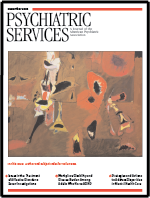A Seahorse Year
Thumbs up for this novel about an adolescent boy presenting with severe mental illness and his unconventional family.
That boy is Christopher, age 16, whose prodromal symptoms burst into crisis when he disappears from his home in San Francisco to be located days later in Phoenix, thanks to a benevolent trucker. His illness is indeed severe, characterized by elaborate delusions, and persists through two periods of hospitalization as well as a longer stretch in what seems to be residential treatment.
Christopher's treatment is, however, never really the center of attention, although it is described realistically enough so as to at least not fatally distract a child psychiatrist who may be reading. The author's primary concern is Chris's reality and the realities of his family members and their friends as well as their experiences and the relationships between them.
Specific aspects of treatment are of interest primarily for the glimpse they provide into how the mental health profession appears to an adequately informed author focused on an adolescent patient in the early 21st century. Here neurobiology reigns supreme, with an intense reliance on medication, perhaps appropriate for a boy with such psychotic illness. Nevertheless, psychotherapy barely appears, except occasionally in a supportive sense, and psychiatrists function overtly as psychopharmacologists. Perhaps this is reality. Nevertheless, one may wonder what grist for the therapeutic mill may have been churned for Christopher. He and his family have issues.
The achievement of this book is its depiction of Chris and his family and their friends—memorable characters, all of them, often perceptive, always human, remarkably sensitive to the nuances of their relationships with each other. Marina, Chris's mother's lover; Hal, his dad, who falls in love with Dan; Nan, Chris's mother; and a deep cast of other characters, finely detailed, including several mental health professionals as well as other patients.
And then there's Chris. With his character, the author, Stacey D'Erasmo, attempted the difficult challenge of creating the individual experience of mental illness—and triumphed. Chris's symptoms are expertly drawn, in all their perplexity and false significance. His dangerousness to others drives the plot to not just one but two wrenching peaks of breathless suspense.
When Chris's delusions enmesh innocent others, the pages fly by. The actions of the characters, in terms of their relationships with each other, are also of interest. There is a modicum of graphic sex. There is little humor. And there is not much deep consideration of certain givens of the characters: their sexuality, their distance from their families, their various relationships to performance. There is a gripping depiction of how one particular family copes bravely with the reality of severe and persistent mental illness. A Seahorse Year is a memorable book. I'm glad I read it.
Dr. Joy is a child and adolescent psychiatrist at Presque Isle Psychiatric Associates in Erie, Pennsylvania.



